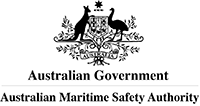Navigate data security essentials with WNPL's glossary. Protect digital information from threats and ensure compliance with global data protection regulations.
Data security refers to the protective measures and protocols implemented to safeguard and protect digital information from unauthorized access, corruption, or theft throughout its lifecycle. It encompasses a broad range of practices, technologies, and strategies designed to secure digital data, ensuring its confidentiality, integrity, and availability. In today's digital age, where data breaches and cyber-attacks are increasingly common, data security has become a paramount concern for organizations of all sizes and across all industries.
Definition
Data security is the practice of protecting digital information from unauthorized access, cyber threats, and data breaches. It aims to ensure that data remains intact, confidential, and available to authorized users when needed. This involves a combination of physical security measures, cybersecurity tactics, policies, and procedures designed to safeguard sensitive data from malicious actors and potential vulnerabilities.
Fundamental Concepts and Techniques
Several key concepts and techniques form the foundation of data security:
- Encryption: The process of converting data into a coded format that can only be accessed and deciphered by users who possess the correct decryption key. Encryption is vital for protecting data in transit and at rest, ensuring that even if data is intercepted or accessed by unauthorized individuals, it remains unreadable and secure.
- Access Control: Implementing strict policies and mechanisms to ensure that only authorized users have access to specific data. This includes the use of authentication methods, such as passwords, biometrics, and multi-factor authentication (MFA), to verify the identity of users before granting access.
- Data Masking: The technique of hiding specific data within a database or file to protect it from unauthorized access while still allowing the data to be useful for certain purposes. This is often used in development and testing environments to ensure that sensitive data is not exposed.
- Data Backup and Recovery: Regularly backing up data to secure locations ensures that in the event of data loss due to hardware failure, cyber-attacks, or natural disasters, the data can be recovered and restored, minimizing downtime and data loss.
Data Security in the Cloud
As more organizations migrate their data and operations to the cloud, ensuring data security within cloud environments has become critical. Cloud data security involves a shared responsibility model where both the cloud service provider and the client play roles in securing data. Key considerations include:
- Cloud Service Provider Security Measures: Understanding the security measures and compliance certifications of your cloud service provider is crucial. This includes their practices for data encryption, physical security of data centers, and how they handle data breaches.
- Client-Side Security Practices: Organizations must also implement their own security measures, including encrypting data before it is uploaded to the cloud, using secure connections to access cloud services, and managing access controls and authentication for users accessing cloud-stored data.
Legal and Compliance Considerations
Data security is not only a technical issue but also a legal and compliance matter. Organizations must be aware of and comply with various data protection regulations and standards that apply to their operations, such as:
- General Data Protection Regulation (GDPR): A regulation that governs the processing of personal data of individuals in the European Union.
- Health Insurance Portability and Accountability Act (HIPAA): S. legislation that provides data privacy and security provisions for safeguarding medical information.
- Payment Card Industry Data Security Standard (PCI DSS): A set of security standards designed to ensure that all companies that accept, process, store, or transmit credit card information maintain a secure environment.
Compliance with these and other relevant regulations is essential for avoiding legal penalties, protecting an organization's reputation, and building trust with customers and partners.
FAQS-FOR-GLOSSARY-TERMS: Data Security
1. What are the key challenges in ensuring data security in cloud environments?
Ensuring data security in cloud environments presents several key challenges that organizations must navigate to protect sensitive information effectively. These challenges include:
- Shared Responsibility Model: Understanding and managing the shared responsibility between the cloud service provider (CSP) and the client is crucial. While CSPs secure the infrastructure, clients are responsible for protecting their data within the cloud, which can lead to confusion and potential security gaps.
- Data Privacy and Compliance: Adhering to data protection regulations (such as GDPR, HIPAA) in the cloud is complex, given the global nature of cloud services and the varying laws across jurisdictions. Ensuring compliance requires constant vigilance and understanding of where and how data is stored and processed.
- Access Management: With data stored in the cloud, controlling who has access to what data becomes more challenging. Implementing robust access control measures and identity and access management (IAM) policies is essential to prevent unauthorized access.
- Data Encryption: While encryption is a powerful tool for protecting data, managing encryption keys in the cloud environment poses challenges. Ensuring that keys are securely stored and managed, while maintaining accessibility for authorized users, requires careful planning and execution.
- Threat Detection and Response: The cloud's dynamic nature makes monitoring for security threats more complex. Organizations must implement advanced security monitoring, threat detection, and response strategies to quickly identify and mitigate potential security incidents.
For example, a healthcare organization using cloud services to store patient records must navigate these challenges carefully. They must ensure compliance with HIPAA regulations, manage access controls rigorously, encrypt sensitive data, and monitor for threats to maintain the confidentiality and integrity of patient information.
2. How can businesses stay compliant with international data protection regulations?
Staying compliant with international data protection regulations requires a proactive and comprehensive approach. Businesses can adopt the following strategies to ensure compliance:
- Understand Applicable Regulations: Businesses must first identify which data protection laws apply to their operations, considering both the locations where they operate and the nature of the data they handle. This might include GDPR, HIPAA, or other national and international regulations.
- Data Mapping and Classification: Conduct thorough data mapping and classification exercises to understand what data is collected, how it is processed, where it is stored, and who has access to it. This step is crucial for applying the appropriate safeguards and compliance measures.
- Implement Privacy by Design: Incorporate data protection measures from the onset of designing systems and processes. This includes minimizing data collection to what is strictly necessary, securing data through encryption, and ensuring that privacy settings are set to high by default.
- Regular Audits and Assessments: Conduct regular audits and risk assessments to identify potential compliance gaps and vulnerabilities. This should be an ongoing process, adapting to changes in regulations, business operations, or the threat landscape.
- Employee Training and Awareness: Educate employees about their roles in maintaining data security and compliance. Regular training on data protection policies, procedures, and best practices is essential to prevent data breaches and ensure compliance.
- Data Protection Officer (DPO): Depending on the regulation, appointing a Data Protection Officer (DPO) may be mandatory. The DPO oversees compliance with data protection laws, acting as a point of contact for supervisory authorities and individuals whose data is processed.
For instance, a multinational e-commerce company must ensure GDPR compliance for its European customers. This involves implementing robust data protection measures, conducting regular compliance audits, training staff on GDPR requirements, and possibly appointing a DPO to oversee compliance efforts.
3. What role does encryption play in securing stored and in-transit data?
Encryption plays a critical role in securing both stored data (data at rest) and data in transit, serving as a fundamental layer of data security by making data unreadable to unauthorized users. Its importance can be highlighted in the following ways:
- Data at Rest: Encrypting stored data ensures that even if physical security measures fail or unauthorized access is gained to storage systems, the data remains protected and inaccessible without the decryption keys. This is crucial for sensitive information stored on servers, databases, or cloud storage.
- Data in Transit: Encrypting data as it moves across networks prevents interception and unauthorized access during transmission. This is particularly important for sensitive transactions over the internet, such as financial transactions, personal communications, or any transfer of confidential information.
- Compliance and Trust: Many data protection regulations require encryption as a standard practice for securing sensitive data. Using encryption helps organizations comply with these regulations and builds trust with customers and partners by demonstrating a commitment to data security.
For example, a financial institution encrypts customer data before storing it in its databases to protect against data breaches. Additionally, it encrypts data transmissions during online banking sessions to safeguard financial transactions from being intercepted by cybercriminals.
4. What data security solutions does WNPL offer to protect sensitive information and ensure compliance?
WNPL offers a comprehensive suite of data security solutions designed to protect sensitive information and ensure compliance with data protection regulations. These solutions include:
- Data Encryption Services: WNPL provides robust encryption solutions for both data at rest and in transit, utilizing advanced encryption standards to secure sensitive information against unauthorized access.
- Access Control and Identity Management: Implementing strict access control measures and identity management solutions to ensure that only authorized personnel can access sensitive data, based on their roles and responsibilities.
- Compliance Consulting: Offering expert consulting services to help businesses understand and navigate the complex landscape of data protection regulations, ensuring compliance with laws such as GDPR, HIPAA, and others.
- Threat Detection and Response: Deploying advanced threat detection and response systems to monitor for and respond to potential security threats in real-time, minimizing the risk of data breaches.
- Data Privacy Assessments: Conducting comprehensive data privacy assessments to identify potential vulnerabilities and recommend measures to strengthen data protection and ensure compliance.
For instance, WNPL could work with a healthcare provider to implement end-to-end encryption for patient data, establish robust access controls for medical staff, and provide ongoing compliance consulting to ensure adherence to HIPAA regulations, thereby protecting patient information and building trust with patients and regulatory bodies.










